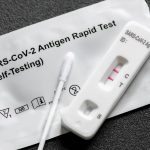
Combining breathing exercises with gradual aerobic activity may benefit teens who are recovering slowly from a concussion. New research found that while the two therapies each offer benefits, together they led to even greater improvement in thinking and memory skills, depression and mood. The findings are scheduled for presentation in Boston and online at the meeting of the American Academy of Neurology, April 22 to 27. “When someone has a concussion, it can affect the body’s autonomic nervous system, and it is increasingly clear that this underlies the inability to tolerate exercise, problems with thinking skills and mood issues in those with persisting symptoms,” said study author R. Davis Moore, an assistant professor of exercise science at the University of South Carolina. “Our study used a handheld biofeedback device to help people train their breathing to match their heart rate patterns,” Moore said in a meeting news release. “This can help balance the autonomic nervous system and manage symptoms.” Recovery from concussion is considered slow when it takes more than one month for symptoms such as headache, dizziness, depression, mood problems, memory and concentration issues to resolve. Heart rate variability is the range of time between heartbeats. For example, a person may have a range of 60 to 100 beats per minute. After a concussion, all patients have changes in this rate, then typically return… read on > read on >



























-300x200.jpg)










